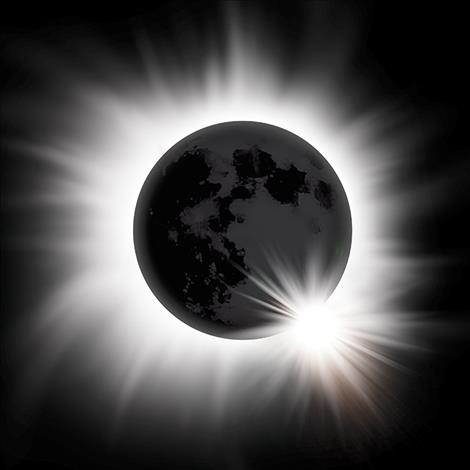Montana team to livestream, capture data from eclipse
Hey savvy news reader! Thanks for choosing local.
You are now reading
1 of 3 free articles.
News from the University of Montana
MISSOULA – This August, the University of Montana will participate in a nationwide, NASA-sponsored project to livestream aerial video footage and gather scientific atmospheric data during the Great American Eclipse.
A team of students and faculty comprised of institutions participating in the UM-based Montana Space Grant Consortium, including Chief Dull Knife College, Miles Community College and Montana State University, will launch 18 high-altitude radiosonde balloons and two large payload high-altitude balloons on Monday, Aug. 21.
The team will launch one of the larger, roughly 8-foot-tall helium-filled balloons, which carries a video camera and other equipment to an altitude of up to 100,000 feet, around 10:30 a.m. near Fort Laramie, Wyoming. Live footage from the camera will be available for public viewing on NASA’s website at http://nasa.gov.
Altogether, 55 teams from across the country will livestream footage of the total solar eclipse, during which the moon will entirely block the sun for approximately two minutes on a path progressing from the Pacific coast in Oregon to the Atlantic coast in South Carolina.
Within the Eclipse Ballooning Project, UM’s Montana Space Grant Consortium has coordinated an Eclipse Radiosonde Project. Over 15 teams will launch a series of radiosondes throughout the duration of the eclipse to measure temperature, pressure, relative humidity and winds at altitudes spanning upwards of 85,000 feet.
The project has been three years in the making. According to MSGC Director Angela Des Jardins, it marks the first time that high-altitude video footage of a total solar eclipse has been broadcast live.
“We’re excited to provide a unique perspective of this rare phenomenon,” Des Jardins said. “The livestream video will show the curvature of the planet, the blackness of space and the whole of the moon’s shadow crossing the Earth during the eclipse.”
The consortium at UM has been involved with the coordination and science within the Eclipse Ballooning Project since 2014.
In addition to a video camera, the team’s large payload balloon will carry a GPS-tracking system and a camera to capture still images of the eclipse. UM’s second-largest high-altitude balloon will carry student science payloads consisting of an ultraviolet sensor, temperature sensors for student science research and a NASA microbiology experiment. Once the eclipse ends, the balloon will pop and its cargo will parachute to Earth for recovery.
The project is sponsored by the NASA Science Mission Directorate and NASA’s Space Grant program, a national network including over 900 affiliates from universities, colleges, industry, museums, science centers, and state and local agencies belonging to one of 52 consortia in all states, the District of Columbia and the Commonwealth of Puerto Rico.
For more information about the national project and press materials, visit http://eclipse.montana.edu.
For more information about the UM Radiosonde Team, visit http://eclipse.montana.edu/radiosonde-project.
















